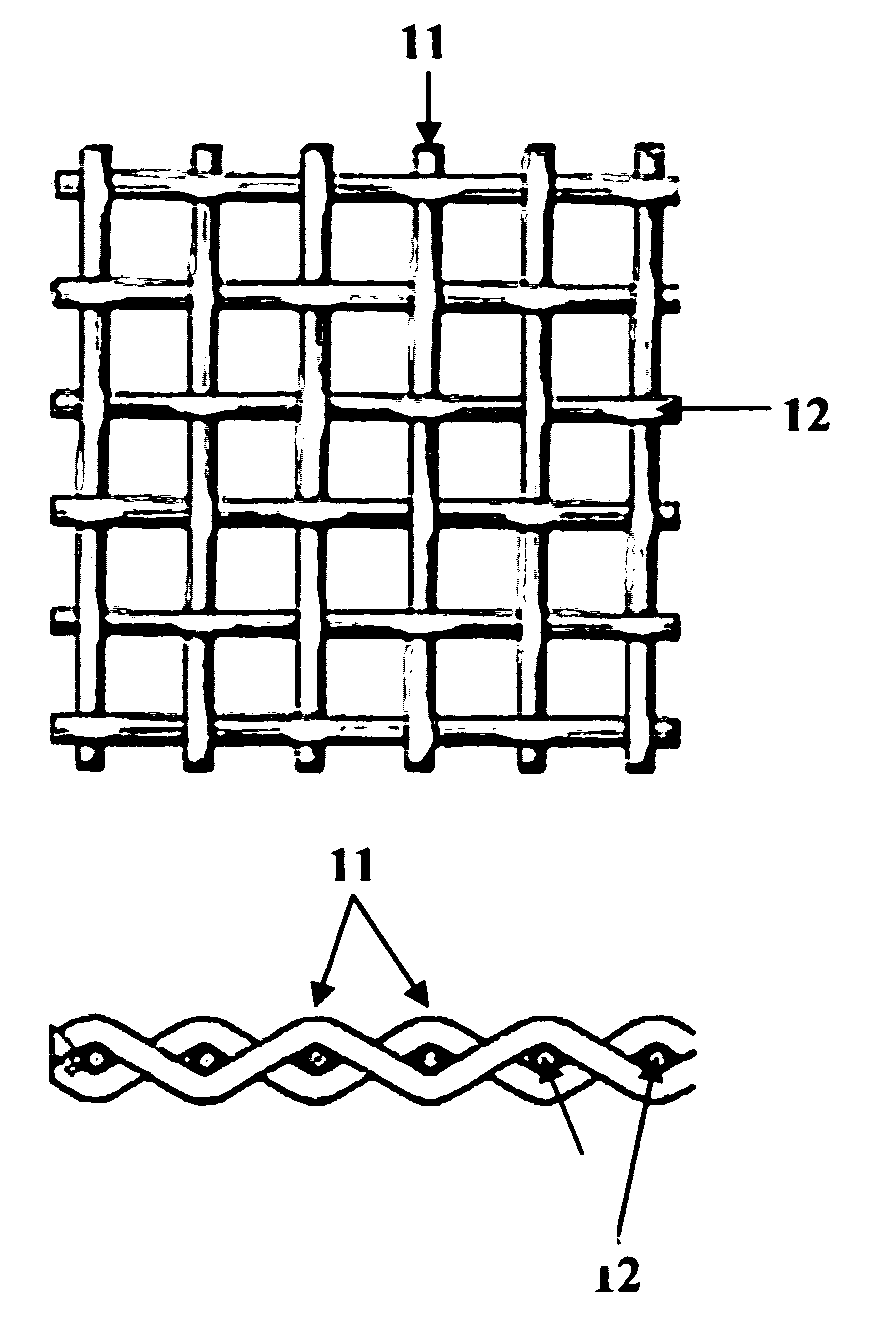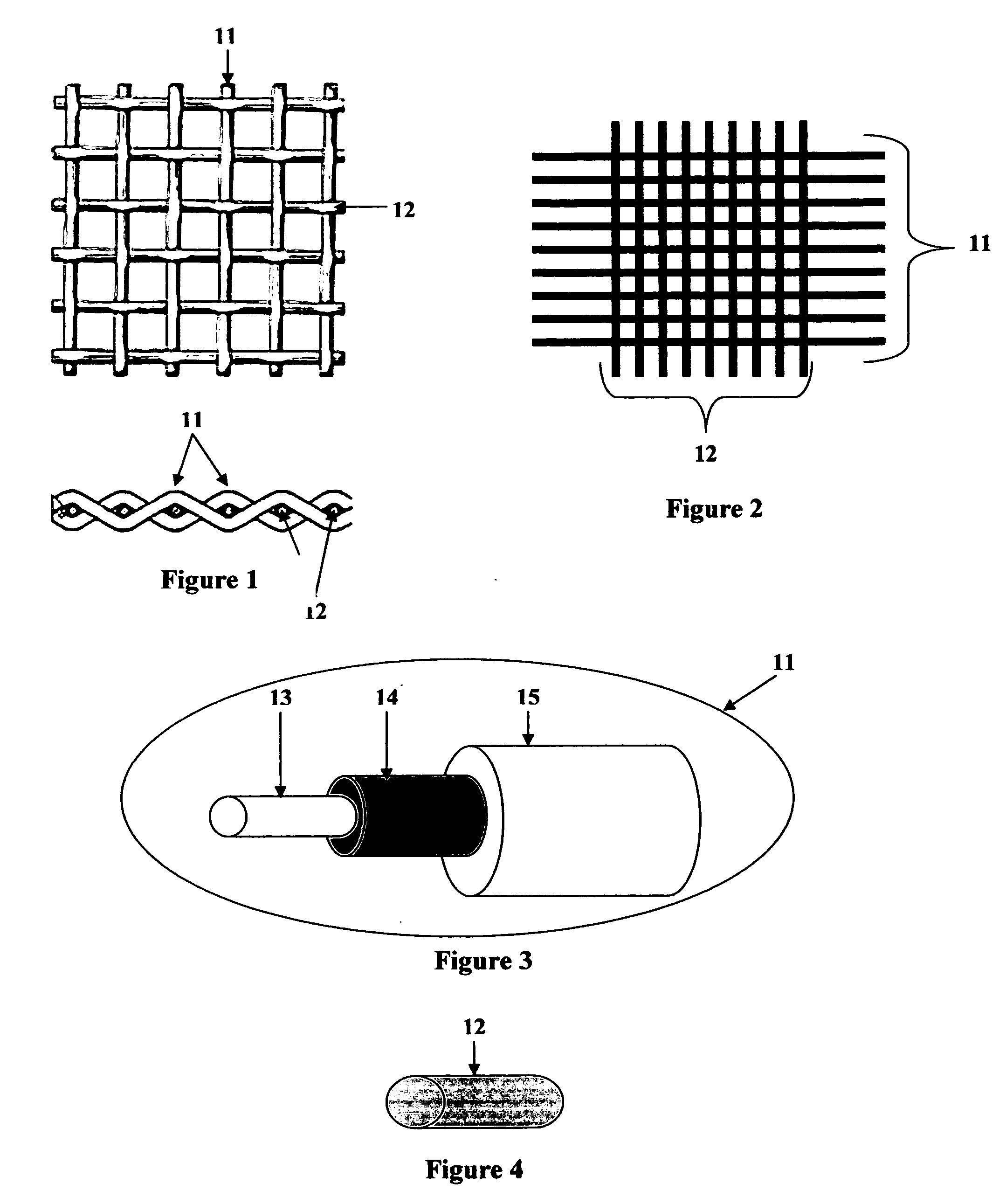System for EMI/RFI filtering and transient voltage suppression
- Summary
- Abstract
- Description
- Claims
- Application Information
AI Technical Summary
Benefits of technology
Problems solved by technology
Method used
Image
Examples
Embodiment Construction
[0026]FIGS. 1 and 2 are perspective views of a flexible, woven or interlaced, electronic system for electronic EMI / RFI (Electromagnetic Interference / Radio Frequency Interference) filtering and for Transient Voltage Suppression. This filtering system consists of two diverse types of flexible and electrically conductive wires that are woven or interlaced into a fabric through the use of textile technologies and / or practices. The primary wire 11 is a flexible or bendable, conductive core, double clad, edifice which promotes one direction of electron flow across the woven material (the “warp” of the fabric). The succeeding wire 12 is of a conventional, flexible, single or multiple strands, non-insulated type which promotes a divergent direction of electron flow across the woven material (the “weft” of the fabric). Variation in weave or interlacement pattern, design, and wire count per unit length (I / O or input / output or strand density) are determined by design and are dependent upon pro...
PUM
 Login to View More
Login to View More Abstract
Description
Claims
Application Information
 Login to View More
Login to View More - Generate Ideas
- Intellectual Property
- Life Sciences
- Materials
- Tech Scout
- Unparalleled Data Quality
- Higher Quality Content
- 60% Fewer Hallucinations
Browse by: Latest US Patents, China's latest patents, Technical Efficacy Thesaurus, Application Domain, Technology Topic, Popular Technical Reports.
© 2025 PatSnap. All rights reserved.Legal|Privacy policy|Modern Slavery Act Transparency Statement|Sitemap|About US| Contact US: help@patsnap.com



